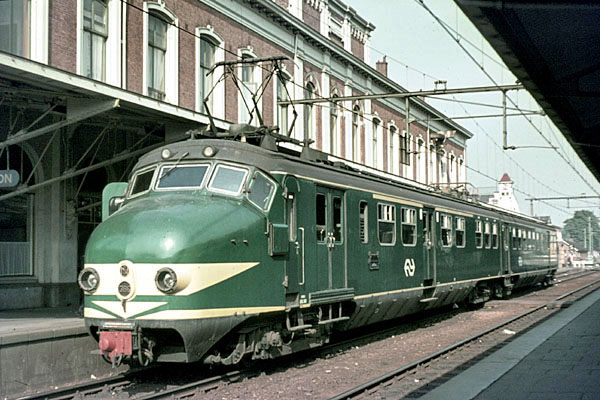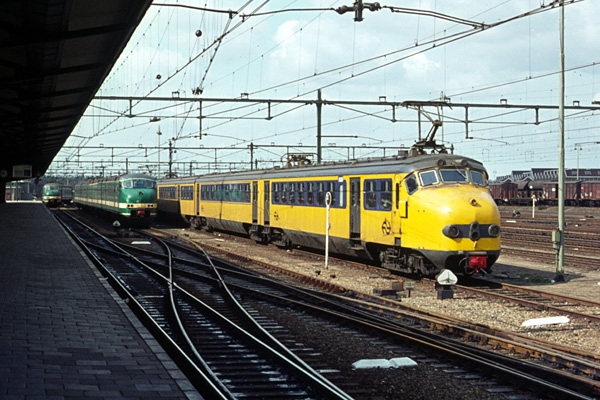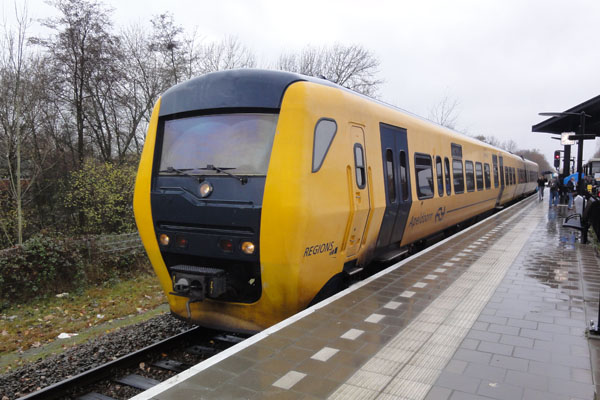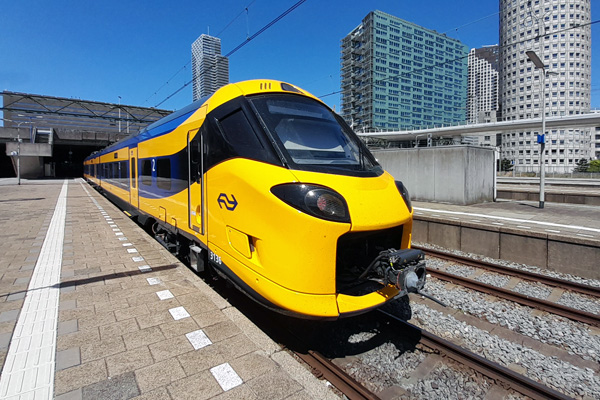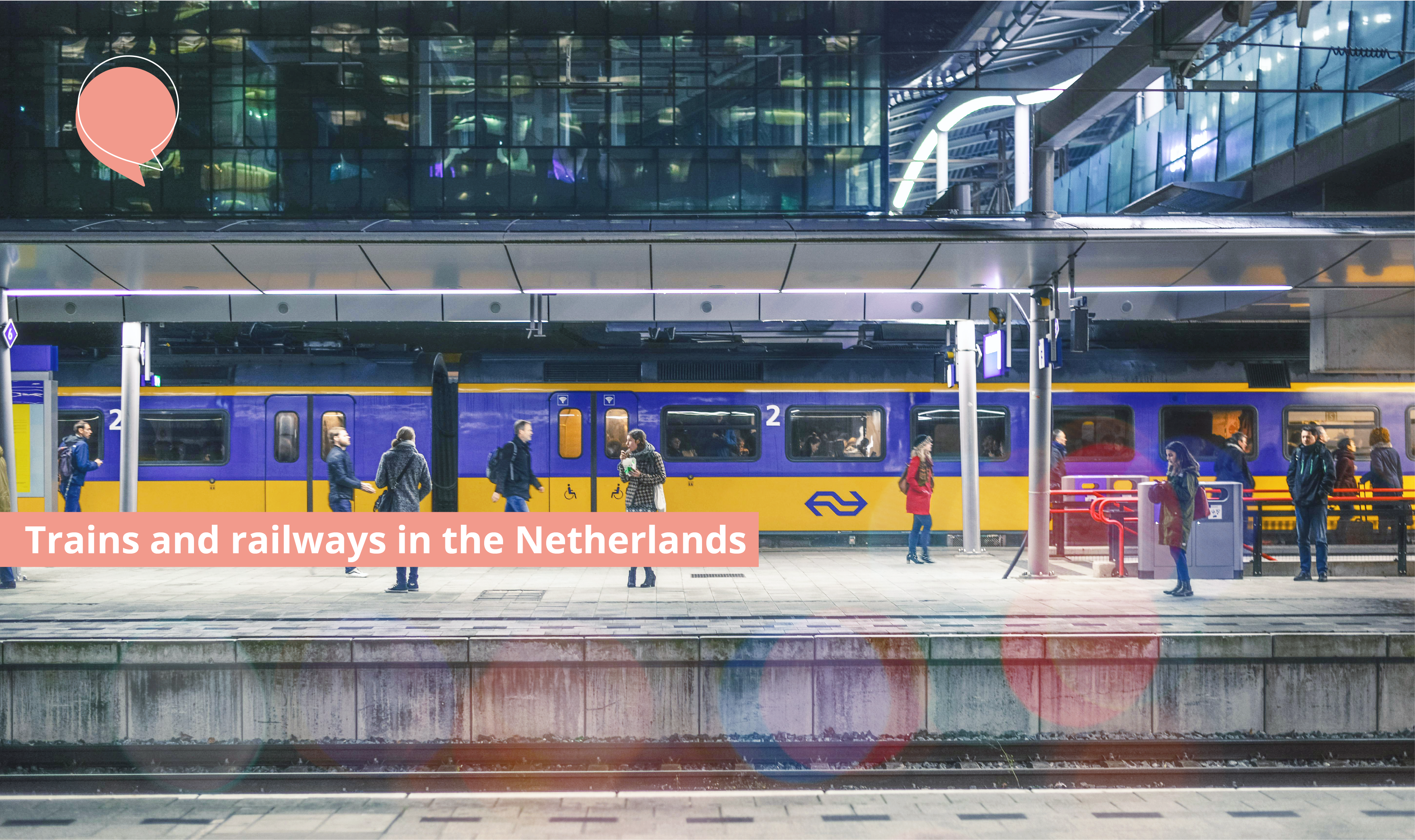
March 2024 | Written by – Willem Van Hoorn
Recently an international friend suggested ‘Trains in the Netherlands’ as a topic for a new blog post. As a frequent commuter by train, she’d be interested to learn more about Dutch trains. Being a frequent train traveler myself, I was happy to comply.
Before we dive into the topic of the Dutch trains and railways, let me make a little observation. In the eyes of my international friends and colleagues, the Dutch have one of the most efficient public transport systems in the world. Having said that: complaining about its punctuality is presumably the second national pastime, over here, after complaining about the weather. How shall I put it? Success has everything to do with expectations, and the Dutch nurture high expectations, when it comes to punctuality (see an earlier post, The Dutch and Time, October 2021).
A bit of History
The first railway line in the Netherlands dates from the year 1839. On September 20th of that year the steam powered locomotive ‘De Arend’ (the Eagle) pulled 9 railway carriages from Amsterdam to Haarlem, as a newspaper report from that time described it: “At the dazzling speed of no less than 40 kilometers per hour”!

A replica of the steam powered locomotive De Arend (the Eagle), that in 1839 pulled the first train ever in the Netherlands. This replica is on display in the Dutch National Railway Museum.
Design History
The now almost 185 year old history of the Dutch railways has left a lot of visible marks in the country. Some of the original railway station buildings are still in use, while others have gradually been replaced by buildings that mirror the ruling ‘taste’ of their time. Still other stations have been discarded, and now serve a different purpose. Art gallery, restaurant, even some private houses.

The older central station of the city of Delft, in almost its original state. This was the second station building of the city, and served from 1885 – 2015. It currently houses an Italian restaurant.

In contrast, the new central station of Delft (2015). This station was built right beside the older one. The building also houses the offices of the Delft municipality.
(Picture credit – Delft old central station picture by Sietske & Delft new central station picture by Steven Lek)
Obviously, over time the looks and feels of the trains themselves have also seen drastic changes. Driven by technological advances, for reasons of safety and comfort for the passenger and driver and for reasons of ‘fashion’
Many Dutch train types have been given (nick)names. Sometimes by the public, often by Dutch Railway staff members. Animal names in particular are popular. We have already seen the first locomotive, De Arend (the Eagle). Here are some other examples:
Electrification
The Dutch Railways were comparatively early in electrifying their railway network. Already in 1908 the first electrified line came into use. The electrification of (largely) the entire network was completed in 1958, also the year in which the last steam powered locomotive was taken out of regular service. Currently only some regional lines are not electrified yet. The services there are run by diesel powered trains.
It is worth mentioning here that a couple of years ago the Dutch Railways made a major arrangement with a large electricity provider, as a result of which all Dutch (electric) trains are 100% wind powered. So by using the train in the Netherlands, you travel with only a minimal carbon footprint.
Some food for number crunchers
The power lines of the Dutch railways are operated at 1500 Volt direct current, with the exception of the HSL (the high speed line from Amsterdam via Rotterdam to Antwerp and beyond), and the ‘Betuwe Line’, a line for freight trains from Rotterdam harbor into Germany. These two lines operate at 25 kV. In the view of ever increasing power demand ProRail is contemplating shifting to a higher voltage for the entire network. Obviously that would mean a major operation.
The width of the Dutch railway tracks is 1435 millimeters, the so-called ‘Standard gauge‘. The entire length of the Dutch railway network is 3289 kilometers, along which you can currently find 404 railway stations. At those stations 415,000 cups of coffee are served per week, 2400 luggage lockers await you, and a total of 22,000 public transport bikes are available (that together in 2023 accounted for almost 6 million rides). On an average working day 1,1 million passengers in the Netherlands travel by train. They are being served by ‘NS’ (Nederlandse Spoorwegen, Dutch Railways) on the main lines, and a variety of other providers on different regional lines.
Nice to knows
Finally in this blog post, some additional ‘Nice to Knows´.
OV Chipcard
There is a card available for the Dutch public transport system, the so called OV Chipkaart. It works in all trains, buses, trams and subways. You buy the card separately, so not with NS. You can put credit on that card in machines at railway stations and elsewhere, or you can arrange for credit to be put on the card automatically, if you get below a certain amount of credit.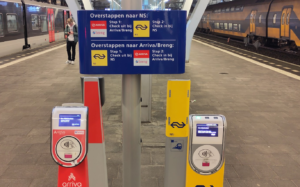
You can use that same card to (for instance) unlock an OV bike (if you have added a subscription to your card), open the gates that are installed in more and more railway stations, or open a GreenWheels car that you rented.
There is a difference between the use of this OV Chipcard in trains and the buses. In the train you check-out only at the end of your whole ride, or if you change provider. For instance from NS to one of the regional services, or to an international train. In the buses, on the other hand, you check-out every time you leave a bus, also if you just change from one bus to the next.
Alternative check-in method
Increasingly (but not everywhere yet) you can check in with the Dutch public transport using your debit or credit card, or your phone. An option that I would mainly recommend to infrequent travelers, moreover since the many discounts I am about to mention below are not available through that check-in option.
A variety of discounts
NS has a variety of discounts available (‘season tickets’), also for non-frequent travelers, especially if you can travel outside the rush hours. For an overview of all the options, see this page . If you get yourself one of the NS Flex subscriptions, and connect your OV Chipcard number to your ‘My NS’ account, you can opt to pay your combined travel costs (so also bus trips, etc) on a monthly basis afterwards.
City and country trips by train
NS offers a variety of city trips, bike tours, walks and other arrangements. As far I could find that part of their website is only in Dutch, but I am sure Google Translate and the likes will be there to help you.There is also NS International, that will be happy to take you on a trip into Europe.
Comprehensive NS app
NS Railways has a very comprehensive app available. It not only helps you plan your trip, it can inform you about any delays, about facilities available at your destination station (like onward bus connections, the amount of bikes available, the stores and so on). And yes, the NS app does speak English, if you want it to.
Railway Museum
Last, but not least: you made it this far in this extra long blog post. That might suggest you have ‘something with trains’. If you do, the Dutch National Railway Museum, in the city of Utrecht, is guaranteed to offer you and yours a very nice day out, while simultaneously experiencing the entire history of the Dutch railways in real size. You can actually go there with a dedicated train, from Utrecht Central Station. Plan your trip to the final destination ‘Station Utrecht Maliebaan’, and the train will take you right into the museum. As a preparation, you can already make this 14 minute train ride online. But then seen through the eyes of the train driver.
I wish you happy traveling, and a happy museum visit!
*All the pictures of trains in this post come from the very comprehensive website ‘Langs de Rails‘ (alongside the tracks). Thank you, Nico Spilt, for your kind permission to use them here.

Willem van Hoorn
He worked as a Policy Advisor Internationalization at Eindhoven University of Technology. He has led several projects and initiatives in the Brainport region to achieve integration and internationalization. When he’s not reading or writing, Willem is often brainstorming for innovative ideas, connecting with others, or bicycling towards the coast.
He is an exceptional Dutch Culture Expert and Storyteller!

